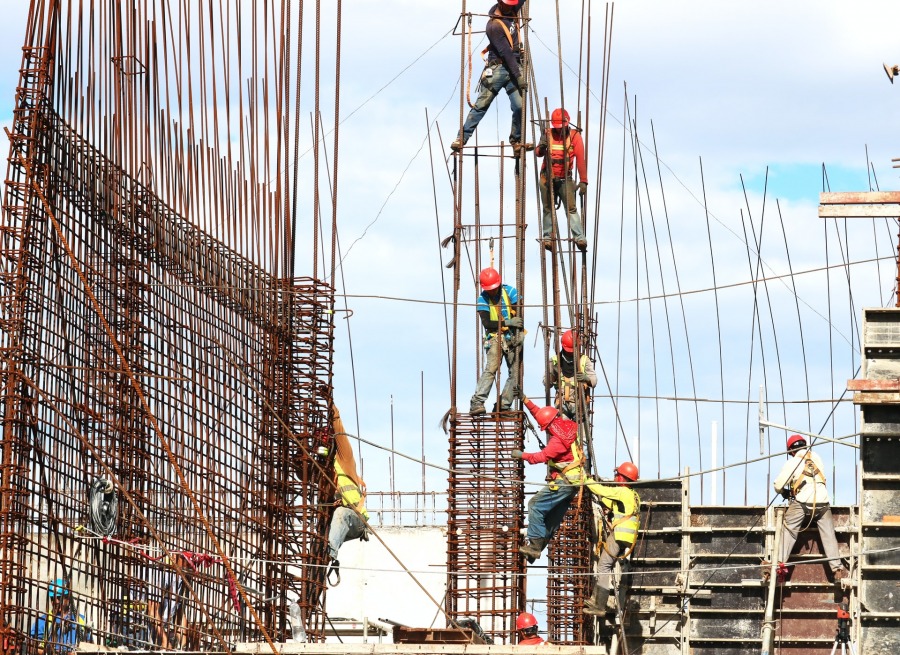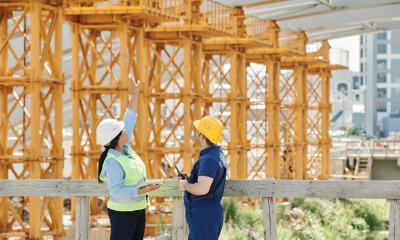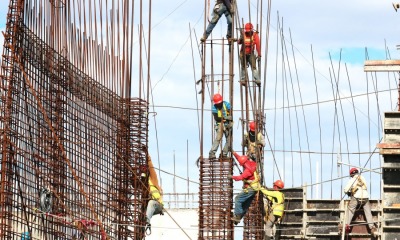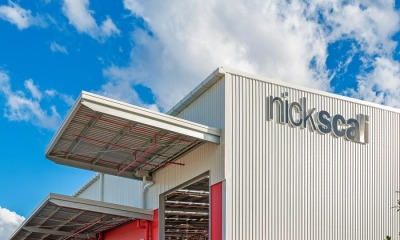Business
4 Different Types Of Lifting Equipment For A Construction Site

One of the biggest challenges on a construction site is the problem of lifting heavy materials and tools to a great height. This is handled through the use of lifting equipment. Now, lifting equipment is an umbrella term on its own. In truth, there are several different types of equipment that all go into this category. These equipment types differ in purpose, properties and even tasks that they’re used for. Here are four such types that are probably the most common.
1. Construction Hoists
Construction hoists are incredibly stable and convenient. They also have a huge carrying capacity and are capable of lifting a lot of materials, tools and personnel vertically. They are safe, make simple movements and are controlled by a simple mechanism. This means that malfunctions are rare and quick to fix. Aside from this, they provide more comfort than the majority of other lifting equipment types. The biggest downside of using this lifting method is the setup. Moving horizontally was never the intended purpose for the construction hoist and it might take quite a while to move it into a new spot.
2. Forklifts
When it comes to materials that are lighter in weight, don’t have to be moved particularly high and potentially have to be handled indoors, the forklift is what you need. Keep in mind that while a forklift may be replaced with a trolley, getting a forklift will save your staff quite a bit of effort. In other words, this is also a long-term investment into their safety and health. Aside from this, even basic training is enough for one to learn how to operate a forklift safely. A word of caution, in order to use the forklift safely, every single operator needs to be aware of its specifications. The majority of problems are a result of misuse, overloading, etc.
3. Scissor Lift
These pieces of construction equipment are capable of lifting heavy loads. Other than their carrying capacity, they also tend to be quite safe. The downsides are that they have a limited motion and that they need a human workforce in order to unload. One more difficulty of a scissor lift lies in the fact that handling it safely is not necessarily an easy thing. Fortunately, when you find a scissor lift hire service, you get the personnel operating it, as well. This helps facilitate things and it increases the overall safety in the construction site. It also makes the concept of hiring equipment (instead of buying it) even more cost-effective.
4. Excavators
Excavators are a perfect example of a multi-purpose machine. Other than using it for the excavation you can use its fork part in order to lift great quantities of materials somewhere high. In a way, this is even a primary service of an excavator, seeing as how it’s not just supposed to dig but also remove the dug earth (or some other material) and load it onto a back of a high truck. Keep in mind that when run but a skilled operator, these excavators can be used in a versatile manner. The only downside is that they’re somewhat rigid and they can’t be used for everything. You do, on the other hand, get several functions in one piece of equipment.
In conclusion
The very last thing you need to understand is that you might have to go with more than just one piece of lifting equipment. Therefore, regardless of the fact that you need one of these machines more than others, this doesn’t make them redundant. This is why having the option to lease a machine is so important. In this scenario, you would buy the equipment you use the most (at least more than 60% of the time) and hire the rest.
-

 Tech11 years ago
Tech11 years agoCreating An e-Commerce Website
-

 Tech11 years ago
Tech11 years agoDesign Template Guidelines For Mobile Apps
-

 Business6 years ago
Business6 years agoWhat Is AdsSupply? A Comprehensive Review
-

 Business10 years ago
Business10 years agoThe Key Types Of Brochure Printing Services
-

 Tech8 years ago
Tech8 years agoWhen To Send Your Bulk Messages?
-

 Tech5 years ago
Tech5 years ago5 Link Building Strategies You Can Apply For Local SEO
-

 Law5 years ago
Law5 years agoHow Can A Divorce Lawyer Help You Get Through Divorce?
-

 Home Improvement6 years ago
Home Improvement6 years agoHоw tо Kеер Antѕ Out оf Yоur Kitсhеn









































